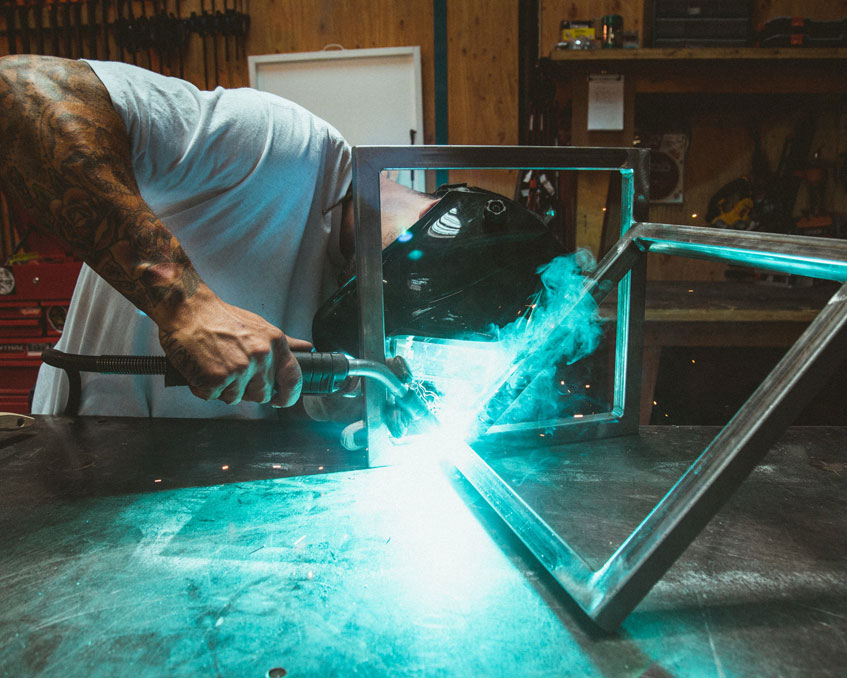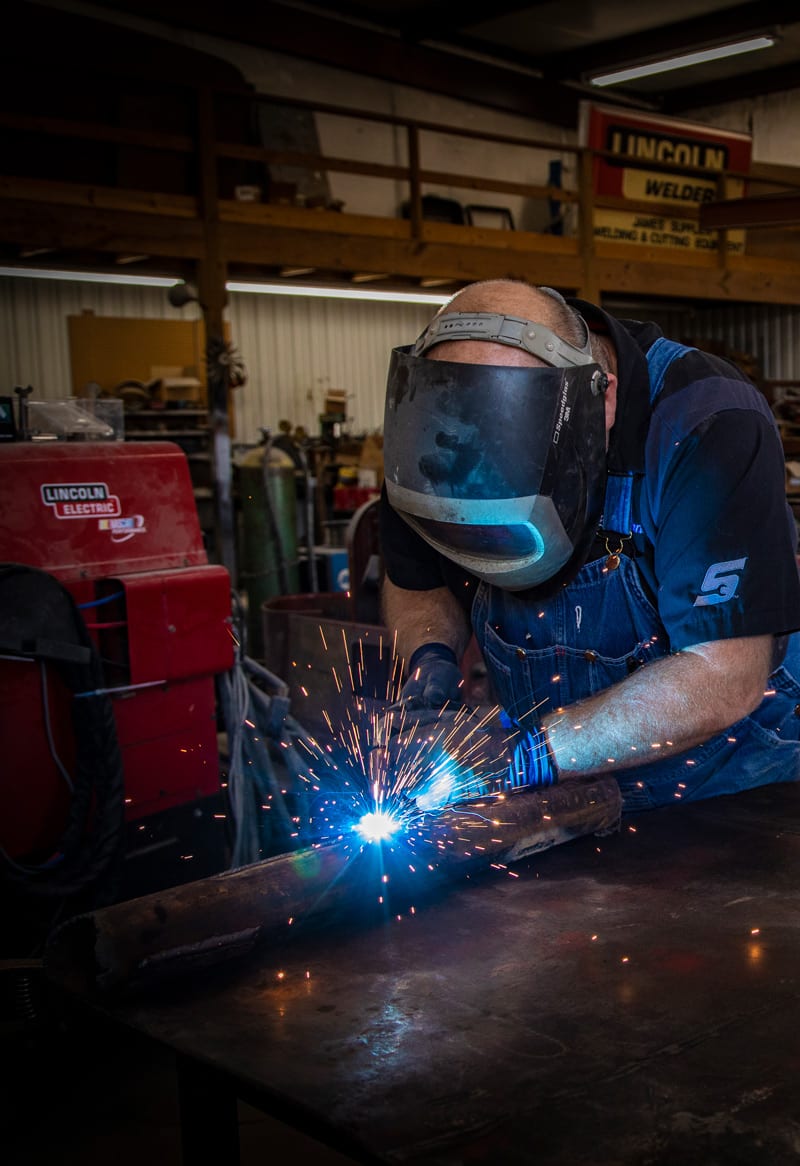Typical Welding Repair Service Issues and Exactly How to Address Them Successfully
Welding fixings typically encounter a variety of concerns that can endanger the honesty of the last item. Common issues include insufficient penetration, porosity, and imbalance, amongst others. Each problem presents special obstacles that call for particular strategies for resolution. Understanding these concerns is crucial for welders aiming to enhance their skills and end results. This conversation will check out these usual welding repair service issues and reliable approaches to address them.
Poor Infiltration
Insufficient infiltration takes place when the weld metal falls short to completely fuse with the base product, resulting in weak joints and prospective architectural failures. This issue often originates from insufficient warmth input, inaccurate electrode angle, or improper welding rate. Welders may experience poor penetration due to a mistake of the essential criteria for a specific product density or type. In addition, contamination on the base material's surface area can hinder reliable bonding, worsening the problem. To address insufficient penetration, welders ought to assure suitable settings on their tools and preserve a tidy job surface area. Regular evaluation of welds is recommended to recognize any kind of deficiencies early, enabling prompt adjustments and the prevention of compromised architectural integrity in welded assemblies.
Porosity
Porosity is an usual problem in bonded joints that materializes as tiny gas bubbles trapped within the weld steel. This defect can jeopardize the stability of the weld, bring about decreased stamina and possible failure under stress. Belgrade Welding. Porosity commonly arises from contamination, wetness, or improper welding strategies, which permit gases to escape into the liquified weld pool. To resolve porosity, welders ought to guarantee proper surface area prep work, keep a clean workplace, and use ideal welding parameters. Additionally, picking the appropriate filler product and protecting gas can reduce gas entrapment. Routine assessment and testing of welds can help identify porosity early, assuring prompt rehabilitative actions are taken, thereby maintaining the top quality and integrity of the bonded structure
Misalignment
Misalignment in welding can arise from numerous elements, including improper setup and thermal growth. Recognizing the source is crucial for efficient resolution. A number of modification techniques are offered to realign parts and ensure structural integrity.
Root causes of Imbalance
Welding misalignment frequently originates from a variety of underlying concerns that can jeopardize architectural integrity. One key cause is inappropriate fit-up of parts prior to welding, which can cause gaps and irregular surface areas. Variants in thermal expansion during the welding process can additionally result in distortion, particularly if the products being joined have various coefficients of development. In addition, inadequate securing and fixturing might fail to hold elements safely in location, resulting in motion throughout welding. Badly conserved equipment, consisting of welding equipments and tools, might present disparities in the weld grain, more adding to imbalance. Driver mistake, stemming from inadequate training or experience, can likewise play a substantial role in creating misaligned welds.

Modification Methods Available
Attending to imbalance effectively needs a mix of restorative methods customized to the particular problems available. One common method is making use of components or jigs to hold elements in the correct position throughout welding, guaranteeing consistent placement. Furthermore, preheating the products can help decrease distortion and enhance fit-up. For substantial imbalance, mechanical realignment methods, such as utilizing hydraulic jacks or clamps, can be utilized to remedy the setting before welding. Post-weld warm therapy may additionally be essential to relieve stress and anxieties created by imbalance. Cautious assessment and change during the arrangement phase can avoid misalignment issues from ending up being considerable issues, promoting a smoother welding procedure and boosting general structural honesty.
Distortion
Distortion is a common obstacle in welding that can develop from numerous aspects, including unequal home heating and cooling. Recognizing the root causes of distortion is crucial for executing effective prevention techniques. Resolving this concern not only boosts structural stability however also boosts the overall quality of the weld.
Reasons for Distortion
When based on the extreme warm of welding, materials usually go through changes that can cause distortion. This sensation primarily occurs from thermal expansion and tightening during the welding process. As the weld area warms up, the material broadens; upon air conditioning, it contracts, which can develop interior anxieties. Additionally, uneven home heating throughout a workpiece can aggravate these stress and anxieties, leading to warping or bending. The sort of material additionally plays a significant duty; metals with differing thermal conductivity and coefficients of development might react in a different way, leading to uncertain distortions. Bad joint style and poor fixturing can contribute to misalignment during welding, raising the possibility of distortion. Comprehending these reasons is crucial for reliable welding fixing and prevention methods.
Avoidance Techniques
Effective avoidance techniques for distortion during welding focus on managing heat input and ensuring correct joint layout. Keeping a consistent warm input aids to lessen thermal expansion and tightening, which can result in distortion. Using methods such as preheating the work surface can likewise minimize the temperature level slope, advertising consistent home heating. In addition, picking ideal joint layouts, such as T-joints or lap joints, can improve security and decrease stress and anxiety concentrations. Applying correct fixturing to safeguard the work surfaces in position even more aids in maintaining positioning during the welding procedure. Lastly, staggered welding sequences can disperse warmth more uniformly, protecting against local distortion. By using these strategies, welders can greatly decrease the likelihood of distortion and boost the general high quality of their welds.
Cracking
Fracturing is a typical problem experienced in welding fixings, usually resulting from numerous variables such as improper cooling prices, material selection, or inadequate joint prep work. The incident of splits can greatly compromise the honesty of the weld, bring about potential failures during procedure. To resolve this problem, welders must initially analyze the source, making sure that products work and properly selected for the specific application. Furthermore, controlling the cooling price during the welding process is crucial; quick cooling can cause stress and anxiety and result in breaking. Correct joint style and prep work likewise add to decreasing the threat. Carrying out these methods can boost weld quality and resilience, eventually minimizing the chance of fracturing in ended up weldments.

Insufficient Combination
A significant concern in welding repair services is insufficient combination, which happens when the weld steel does not adequately bond with the base material or previous weld passes - Montana Mobile Welding and Repair. This defect can lead to weak points in the joint, possibly endangering the stability of the welded framework. Factors contributing to incomplete blend include inadequate warmth input, incorrect welding Montana Mobile Welding and Repair Belgrade Fabrication technique, and contamination of the surfaces being joined. To address this issue effectively, welders ought to ensure appropriate pre-weld cleaning and surface prep work, as well as change their welding specifications to accomplish adequate penetration and blend. Regular assessment during the welding procedure can additionally aid determine incomplete combination early, enabling timely restorative actions to boost the overall high quality of the weld
Overheating
While welding repair work can enhance architectural honesty, overheating provides a substantial obstacle that can result in material degradation. Extreme warmth throughout welding can modify the mechanical buildings of steels, causing decreased strength, enhanced brittleness, and warping. This sensation is particularly critical in high-stress applications where structural dependability is extremely important. Determining getting too hot can entail aesthetic examinations for discoloration or distortion, along with monitoring temperature level throughout the welding process. To mitigate the dangers related to overheating, welders need to utilize appropriate techniques, such as regulating warm input, adjusting traveling speed, and utilizing appropriate filler materials. In addition, applying pre- and post-weld warm therapies can assist recover product properties and boost the general top quality of the repair, ensuring long-lasting efficiency and security.
Regularly Asked Questions
What Are the Common Indications of a Welding Problem?

How Can I Evaluate My Welds for Quality?
To examine welds for top quality, one can utilize aesthetic inspections, ultrasonic testing, and radiographic approaches. Each strategy ensures architectural honesty, determines issues, and validates adherence to defined criteria, ultimately enhancing the reliability of the bonded joints.
What Safety Precautions Should I Take While Welding?
When welding, one must prioritize safety by using suitable individual protective equipment, guaranteeing appropriate ventilation, safeguarding flammable materials away, keeping a clean workspace, and being aware of environments to avoid injuries and mishaps.
Can I Repair a Weld Without Remodeling the Entire Joint?
Repairing a weld without renovating the entire joint is feasible, depending upon the damages (Belgrade). Methods such as grinding, adding filler product, or using a welding procedure can properly deal with details defects while protecting the surrounding structure
What Devices Are Vital for Efficient Welding Services?
Essential tools for effective welding repair services include a welding equipment, cord brush, grinder, protective equipment, clamps, and filler materials. Each tool plays a vital role in guaranteeing high quality and safety and security throughout the fixing procedure. Porosity commonly emerges from contamination, wetness, or incorrect welding methods, which allow gases to escape into the molten weld pool. Improperly kept devices, consisting of welding devices and devices, may introduce disparities in the weld grain, additional adding to misalignment. When subjected to the intense warm of welding, products typically undergo modifications that can lead to distortion. Breaking is a common concern come across in welding repair services, commonly resulting from numerous factors such as improper air conditioning rates, material selection, or poor joint preparation. A significant problem in welding repair services is incomplete fusion, which occurs when the weld metal does not adequately bond with the base material or previous weld passes.